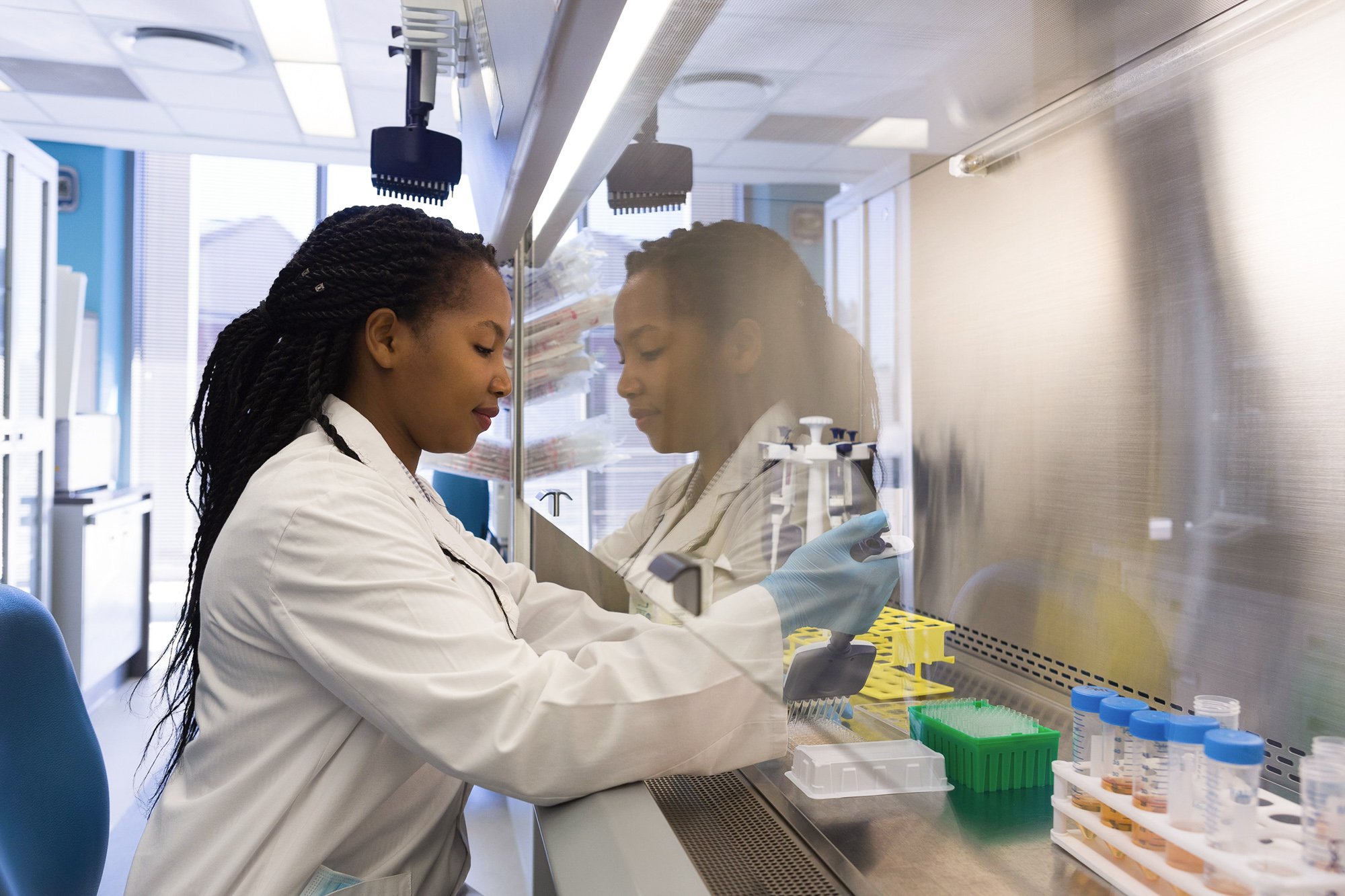Animal-free, non-recombinant albumin and transferrin for cultivated meat
The identification of non-animal, non-recombinant proteins with similar functionality to serum albumin and transferrin will lead to major cost reductions in cell culture media development, facilitating progress toward achieving price parity with cultivated meat.
-
Cultivated
-
Plant-Based
- Research
- Commercial
- Production
- R&D
- Raw Materials, Ingredients, & Inputs
- Cell culture media
- Crop development
- Target molecule selection
- Industry
- Academics
- Investors
- Startups
Current challenge
Albumin and transferrin are proteins found throughout multiple eukaryotic kingdoms. Transferrins play a conserved role in the transport of iron, while albumins aid in the transport of various ligands such as fatty acids, water, and other cations.
In cell culture, albumin and transferrin play important roles in promoting viability, growth, and differentiation. When used in cell culture, these proteins are typically sourced from animal sera such as fetal bovine serum. In animal serum, albumin is the most abundant protein, making up roughly 50-60% of serum’s protein content. Animal serum also contains transferrin at concentrations 10-fold lower. Other proteins, such as growth factors, are found at concentrations often 1,000 to 100,000 times lower than transferrin and albumin, and these in vivo concentrations fall within the same order of magnitude as their use in vitro. In the serum-free media formulations used in the cultivated meat industry, these proteins must be supplied by other means, typically through recombinant production.
Previous analyses have found that recombinant proteins and growth factors make up the vast majority of serum-free cell culture media costs, with over 95% of these costs driven by albumin and transferrin. Thus, finding cost-effective alternative sources of albumin and transferrin will be critical to reducing the costs of cell culture media and achieving more cost-competitive profiles for cultivated meat products.
Proposed solution
Though recombinant production of these proteins in transgenic plants and microorganisms is a powerful and scalable approach, it still poses limitations in terms of cost, scale, and infrastructure requirements. Identifying and validating native plant sources of proteins with suitable functionality to mimic the roles of serum albumin and transferrin would reduce the need for extra research and development in recombinant production and allows for greater scalability via direct extraction from crops.
Albumins
Future Meat identified chickpea homologs of serum albumin that reduce media costs by 60%, suggesting a promising direction for plant proteins to replace essential serum proteins. Chickpea expresses multiple albumins, including the pa2 albumin, which contains 4 hemopexin-like domains and binds to hemin, an oxidized form of heme released from heme-containing proteins (e.g. myoglobin and hemoglobin). Hemin can cause oxidative stress by reacting with reactive oxygen species that lead to the degradation of proteins, lipids, carbohydrates, and DNA in cell culture and in vivo through lipid peroxidation and free radical generation. Hemopexin is a serum protein that binds to hemin with a strong affinity. The hemopexin-like domains of chickpea albumin have a lower binding affinity for hemin than both hemopexin and bovine serum albumin, which may be explained by conformational changes of chickpea pa2 albumin upon binding, although further exploration is needed to characterize the binding mechanisms. Chickpea pa2 is also homologous with pa2 albumins in pea seeds, which have a similar binding affinity with hemin, suggesting the potential distribution of this protein family in pulses. Future efforts can be directed toward screening for albumin homologs—or other functionally similar proteins—in various species.
The functionality of albumin as a fatty acid carrier has led some to explore whether albumin can be replaced altogether by unsaturated free fatty acids. In one experiment with Chinese hamster strain (CHD-3) cells, serum albumin was replaced entirely by corn oil, which is composed mainly of linoleic acid that is typically bound to albumin in plasma (Ham 1963). The evidence for such a strategy is currently quite limited, so further investigation is needed to determine whether fatty acids or oils may truly be a viable replacement for albumin. Other proteins that reversibly bind to fatty acids, such as β-lactoglobulin in whey, have shown similar growth promotion patterns as serum albumin. Fatty acid requirements for cellular growth need to be further specified, as studies that replace serum albumin with fatty acids have contrasting findings that may be resolved using well-characterized controls and up-to-date technology.
Commercial suppliers of serum albumin sometimes sell the protein in crystalline or fraction V forms, the former of which exhibits double the growth response compared to the latter. As the removal of fatty acids associated with serum albumin is somewhat difficult, differences in the performance of different forms of albumin may reflect differences in the amount or type of associated fatty acids. Some “essential” fatty acids have been excluded from protein-free, chemically defined media with no compromise in cellular growth. For complex cultivated meat systems, it will be crucial to identify key components for cellular growth and differentiation. When designing screens for non-animal proteins that can functionally substitute for serum albumin, it will be important to keep in mind that such proteins may display interactions with lipids added to the media by their potential role as lipid carriers.
Transferrins
Homologs of animal transferrin have been identified in photosynthetic organisms such as fungi and algae. In the case of the triplicated transferrin (Ttf) found in the alga Dunaliella salina, the mechanism for iron uptake is similar to the pathway in animals; however, unlike serum transferrin, Ttf can bind and internalize iron even in conditions of high salinity. Studies have not yet been conducted using these non-animal, non-recombinant proteins in cell culture. Phylogenomic analyses have identified characteristic motifs and evolutionary processes that relate plant and animal transferrins, but as genome databases grow as a result of widespread plant screening, more frequent and robust analyses of plant genomes must be conducted.
Further screening of native plant albumins and transferrins should focus on properties most relevant to functionality in animal-derived albumin and transferrin, including molecular weight, ionic charge, hydrophobicity, and amino acid composition. Machine learning algorithms like those behind AlphaFold will likely be an essential tool to screen candidates from open-access genome databases, such as that of the NCBI (applied in the phylogenomic study mentioned above), to determine native plant homologs and to optimize media formulations.
To successfully use plants as a source of albumin and transferrin at a commercial scale, further work must optimize and scale purification methods and explore integration with other sustainable industries, such as algal biofuel production and extraction of starches, lipids, and other proteins.
Once plant protein candidates are purified, empirical tests for their substitution in cell culture media for serum albumin or transferrin must be conducted in 100% serum-free conditions. These tests may require adapting serum-containing media formulations to remove serum or adapting serum-free formulations to work with other species or cell types (e.g., B8 media formulation to Beefy-9).
Anticipated impact
Native plant protein homologs for both serum albumin and transferrin have been identified, but to date, no uses of these for cultivated meat have been reported in the scientific literature. Using albumin and transferrin natively found in plants could allow for animal component-free media without the use of recombinant proteins.
Because albumin and transferrin are used at such comparatively high amounts in cell culture compared to other recombinantly-produced growth factors, they may make up a substantial proportion of the total production cost of cultivated meat (e.g., a contribution of nearly $100/kg as modeled by Vergeer et al. in 2021). Scaling recombinant production of albumin and transferrin could substantially lower their costs, but this must be balanced with the time and cost considerations for establishing the new infrastructure that would be required to manufacture thousands of metric tons of these proteins to supply the cultivated meat industry. Therefore, the use of non-recombinant albumin and transferrin proteins could not only reduce cultivated meat costs on faster timescales but also enable any new recombinant protein manufacturing capacity to instead be dedicated to producing other high-value proteins such as food-grade growth factors or flavoring molecules.
Similarly, recombinant proteins were responsible for a substantial fraction of the carbon footprint of culture media in many of the scenarios modeled by Sinke & Odegard in 2021. Therefore, replacing recombinant proteins with native plant proteins with lower footprints can substantially reduce the overall footprint of the cultivated meat product. Life cycle and techno-economic analyses that quantitatively explore the use of native plant proteins (vs. recombinant proteins produced in microbes, fungi, or plants) as substitutes for animal-derived albumin and transferrin can rigorously explore the potential environmental and cost benefits of their application.
There are some anticipated challenges with biologically sourcing native proteins. For example, plant-derived albumin and transferrin may have similar variability issues as serum albumin and transferrin. In addition, the albumin protein family is responsible for several common food allergies–for example, chickpea 2s albumins may present as allergens to certain people. Therefore, the allergenicity potential of albumin proteins used in cell culture media should be carefully weighed and assessed, which will be mandatory for cultivated meat manufacturers seeking approval.
Collaboration between industry players and academic institutions to provide plant-derived transferrin and albumin will be essential to drive down the costs of cultivated meat and accelerate widespread scale-up and production.
Related efforts
Understanding the structure of serum albumin and its interactions with other molecules as done by Carter and Ho (1994) may bring insights to determining replacements. Protein sequence alignment to compare algal transferrin to other proteins in the transferrin family has been conducted by Schwarz et al. (2003), which can help predict the activity of sequences from other organisms. Shiru is one company that is creating a database that links protein characteristics such as sequence and structure to food functionality.
Other resources:
GFI resources
Include any relevant GFI resources that would be useful for actors who wish to pursue or consider this idea in greater depth. This section is for GFI resources; non-GFI resources can be linked in the Related Efforts section. Related Solutions should be linked in the next block.

The costs and environmental impacts of cultivated meat
Join GFI Senior Scientist Elliot Swartz, Ph.D., for a review of key insights from a recent life cycle assessment (LCA) and techno-economic analysis (TEA) modeling a future large-scale cultivated meat…
Meet the author

Kim Lu
GFI RESEARCH FELLOW
Princeton University

Find collaborators
Join the GFIdeas global community of 2,000+ entrepreneurs, scientists, investors, and subject matter experts. Discuss projects on the members-only Slack community, attend monthly seminars, and use the community directory to help you find collaborators working on similar Solutions!
Related solutions
-
Cultivated
Open-access formulations & optimization methods for cell culture media and growth factor cocktails
The availability of more open-access formulations will provide a foundation to enable both academic researchers and startup companies to develop their own customized formulations with far less effort and cost.
-
Cultivated
-
Fermentation
Systematic investigation of growth factor needs and effects
Open-access research into growth factors required for proliferation, maintenance, and differentiation of cell types relevant to cultivated meat will support both academic and industry research efforts. This research could include…
-
Plant-Based
Protein sequence, structure, and functionality database
There is a need for deeper fundamental research on the relationships between protein sequence, structure, functionality, and ultimately performance in plant-based food products. While several plant-based companies have claimed a…

Explore the full solutions database
Browse 100+ startup ideas, commercial opportunities, research projects, and investment priorities throughout the alternative protein supply chain.
Get involved
If you’d like to fund a research project, work on any of these solutions, share information about related efforts that are already underway, or elevate new ideas for advancing the alternative protein industry, we’d love to hear from you!
